Journal #19: Project Pileup and Unexpected Wonders
by Miles Raymer
It seems an inviolable law of nature that people who spend a lot of time working on home improvements must deal with the issue of project overlap. Some endeavors take longer than expected, some require the help of people who are only available at certain times, and some prove so psychologically or physically daunting that they are hard to even start, let alone finish. Slowly but inevitably, projects begin to infringe on one another until it feels like there will never be enough time to get everything done. Some folks thrive on this kind of chaos, deriving exuberance from overwhelming circumstances by way of some ill-defined emotional alchemy.
I am not such a person.
I like to have things orderly and predictable. My ideal day includes roughly 22 hours of planned activity (8-10 for sleeping), with no more than 2 hours of “I’m not sure” time. Actually, on second thought, 2 hours seems a bit much. It’s not that I’m afraid of having downtime or incapable of idleness, just that I plan those things the same way I plan activities that actually need to get done. The figures don’t always add up, of course, but over the years I’ve managed to create systems that minimize the chances of my plans being foiled. I’m also aware that disruptions in my routine have often changed my experience for the better, or even presented invaluable opportunities without which my life would be very different. Still, most days I want the hours to tick by exactly the way I’ve imagined. I want a system.
So when I learned that the permit for our new garage and house extension project had finally been approved and that construction would start almost immediately, I grumbled instead of celebrating. But I still have to get that damn garden fence done, I thought. Unappreciative of my good fortune, I went begrudgingly back to the neural drawing board, recalibrated, tightened up the screws. The fence’ll get done, I told myself. There’s time. I’ve got a new system.
But this sort of thing, well, it’s not part of the system:
These are the moments I realize that I’ve signed up for a lifestyle that won’t ever conform to my expectations of predictability and regularity. Best laid plans, something about field mice, and all the rest. So while I won’t deny my tendency to begin spewing expletives when I see pressurized water bubbling up from what should be a dry hole, I always do my best to rally when plans go awry.
More often than not, I’ve found that overcoming setbacks isn’t just a matter of mastering one’s own petty impulses, but of keeping the right people around. That’s why I was lucky to be working with my friend Jesse when we busted this irrigation pipe (yes, the same pipe I busted recently, but in a different and––in my defense––rather unpredictable spot!). Jesse, a middle school history teacher, is the kind of person that springs into being when realism and optimism decide to get down. He knows how to get a job done, but doesn’t balk when things go sour. So as I pounded my puny fists on the grass and reached for something to throw, he smiled and headed to the hardware store. I had the pipe exposed and cleaned by the time he got back, and we fixed it in just a few minutes. No harm done. We went back to working on the gateposts:
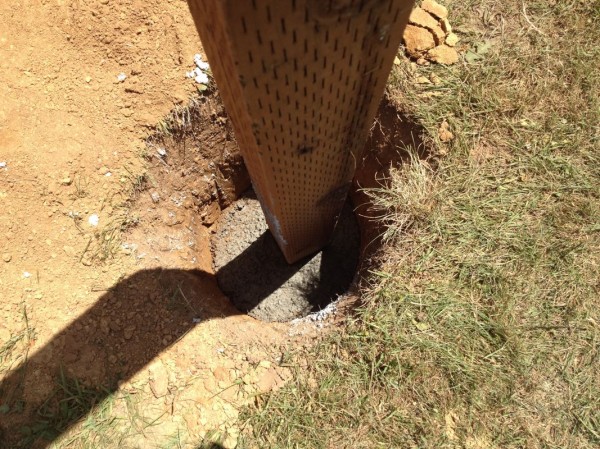
Gateposts usually require some concrete to keep them stable, but make sure to get all your leveling done before pouring!
These gateposts are dug in about 2′, with roughly 6″ of concrete to ensure long-lasting stability. We couldn’t get them perfectly level, but we got close enough. Fortunately, the screws that hold the gate are somewhat adjustable, so we’ll have a little wiggle room when hanging the gate. By the time we’d finished filling these holes in, it was time to turn the water back on and check the compromised water pipe. The leak was definitely fixed, but to our dismay we discovered that another, entirely new leak had sprung in a nearby joint. I cursed some more, dug some more, and cut the leaky joint out while Jesse kindly made two additional trips to the hardware store.
We got the whole thing straightened out in the end, which is to say slightly bent and decidedly cumbersome:
It was late afternoon, and although Jesse was undaunted, I was only able to make it through the placement of the remaining T-posts before calling it a day. My plan to finish the fence before house construction began proved nothing more than a pitiful oblation to the gods of polyvinyl chloride.
It was a frustrating outcome for my fencing day, but when time came to help local builders Dan and Sean begin laying the foundation for our new garage, I was filled with a kind of mysterious excitement––the kind you get before the big dance or when they call your number at a raffle and you get to take home a huge jar of jellybeans. I can’t imagine two more affable fellows to work with, and they’ve done a great job so far of keeping me informed about what they’re up to and giving me direct instructions about how to be helpful. Though I find the project daunting, I know how lucky I am to work with two experienced builders on my own living space. So far this week, we used a tractor to trench the borders of the foundation and spread gravel in order to convert a slope into a relatively level surface. This will allow us to pour a foundational slab of concrete. It was nice to see Larry again, that displacer of hummingbirds who cleared the garage space for us back in January.
Dan and Sean use a tool called a sight level to find out if different points on the gravel surface are level with one another. It’s essentially a small telescope that sits on a tripod and can be minutely adjusted until it is perfectly level. Then we run a tape measure vertically on a reference point (the point we’d like the rest of the surfaces to be level with) and record that exact height using the sight level. Once the reference point is acquired, we can then measure any other part of the desired surface using the same method and discover if that point it higher or lower than the reference point.
There are many other tricks of the trade and techniques necessary for laying a good foundation, and I’m excited to learn them as this process continues. I’m grateful to be under the guidance of experienced professionals. I’d much rather take orders from someone who knows better than I do than be responsible for something I’m not capable of doing on my own. Best of all, when the system falters, it’s not wholly my responsibility to fix it. I can be part of the solution, but my labor is ultimately the conduit for someone else’s expertise. It’s a wonderful relief.
Now that my workload has increased significantly, I have to turn to my loved ones for even more support than usual. Luckily for me, Ma is on summer break from teaching at HSU and is in good shape to take over most of the garden work. She is indomitable in her enthusiasm for our ever-growing harvest. Just this morning, she outdid herself:
It certainly is fulfilling to see the garden flourishing…as planned. But nothing jolts the mind like the wildly unexpected, and last week I was fortunate to witness a truly amazing natural event: a bee swarm.
The reason the swarm moved to the outdoor shower is that there is actually some old beekeeping equipment stored in there, so they were moving into one of the hives. I would have loved to keep the hive myself, but I don’t know enough yet about beekeeping. My hands are full with other projects, and learning enough to take good care of bees isn’t quite on my radar yet. I can only take in so much new information at once!
Fortunately, I’ve learned enough about bees in recent months to know that I should call a beekeeper to come collect them. Natural swarms are very desirable because they contain a diverse, robust population of bees from different hives. Hives created from such swarms tend to have a good chance of making it through the winter, when many hives fail due to colony collapse disorder or other obstacles to survival. I called Shail at Tule Fog Farm because I know she keeps bees, and she contacted a friend, Erica, who was more than happy to take the bees off my hands. Erica has kept bees in the past but hasn’t had any since she moved to Humboldt, so I was thrilled to help her get her first local hive. More than that, I am happy the bees will have a good home with someone trying to look out for them.
For me, the bee swarm was a reminder of the greater order of which we are all a part and to which we are all subject––the kind of reminder I need most. It’s hard to describe the sense of awe engendered by watching these small creatures enact one of Earth’s great collective rituals. It was a flaw in the system, a crack in the confines of my orderly life through which beauty poured with unflinching vigor. The moment was vast and miniscule at once, absolute in its particularity, cosmic in its implications. It was a sight I’m grateful to have seen. Inside that marvelous, mutable cloud was a message:
It won’t all get done.
You’ll never be finished.
And that’s all right.
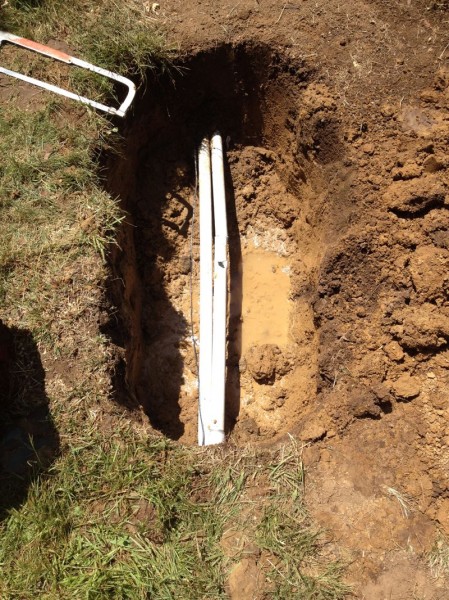
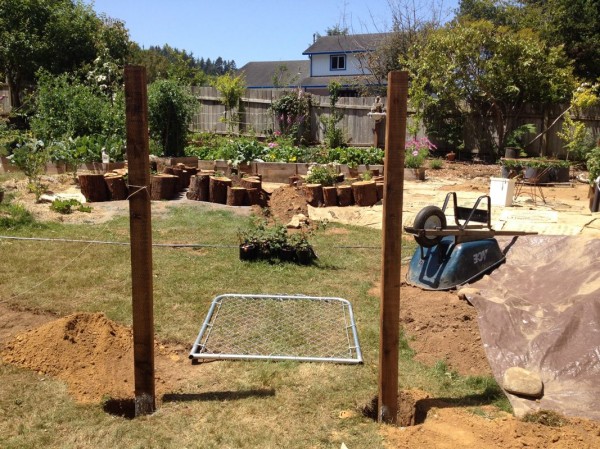
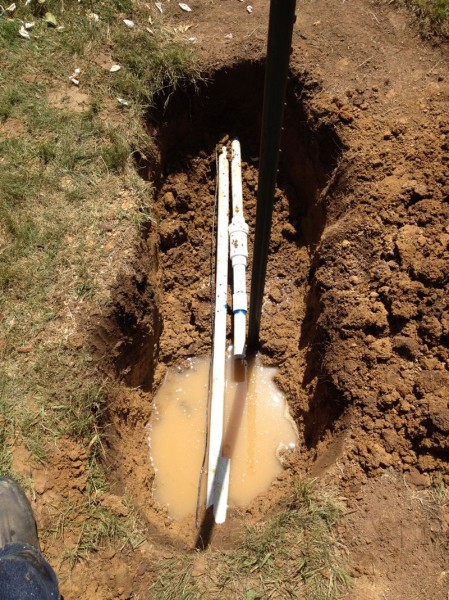

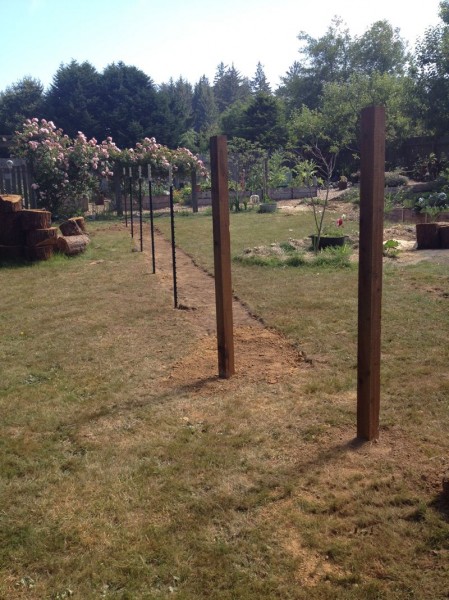
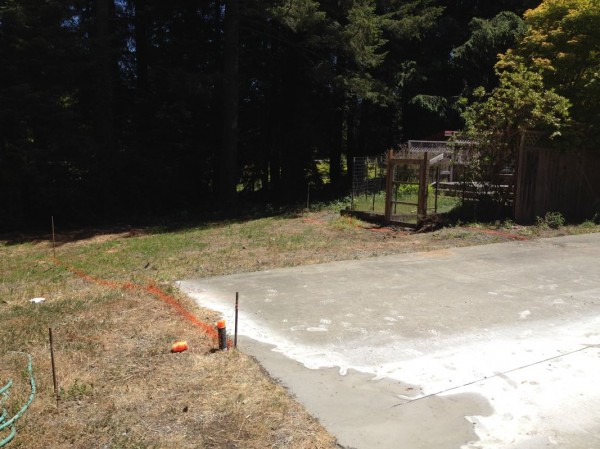
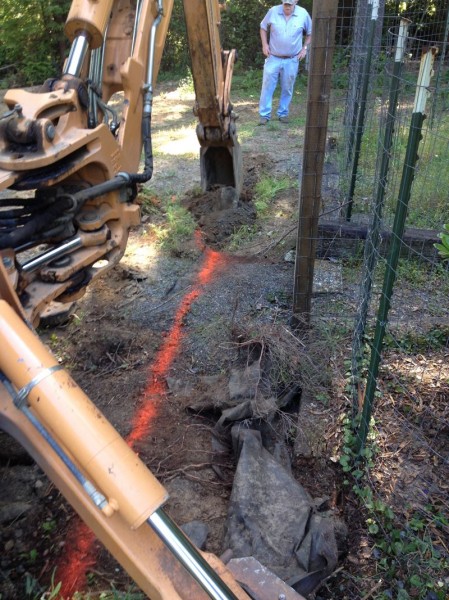
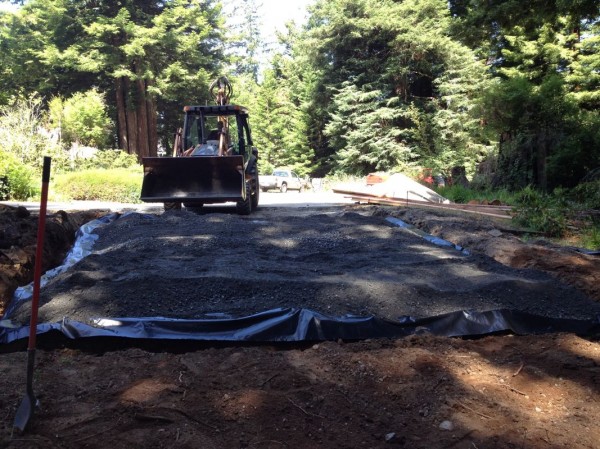
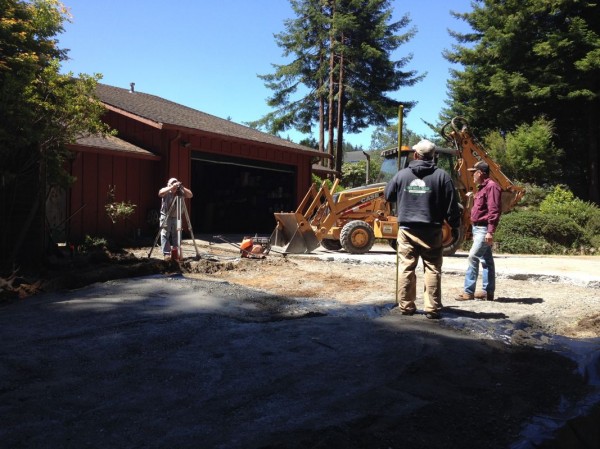


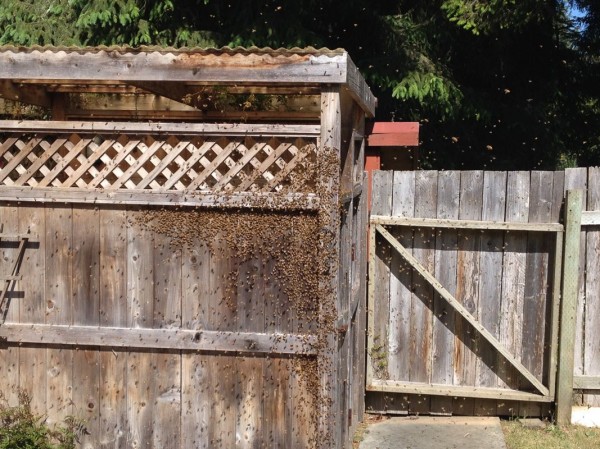
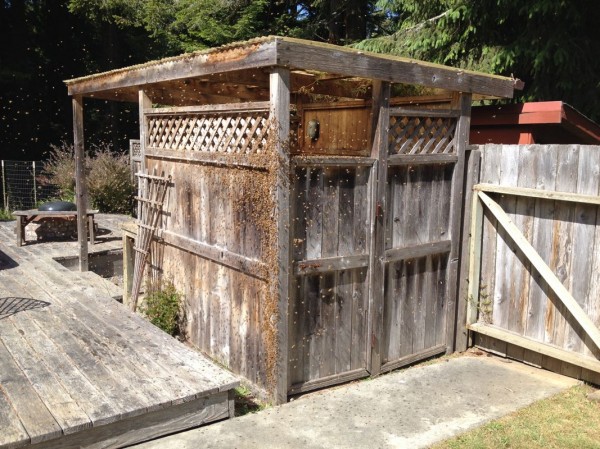
Flawless writing, trademarked Miles humor, and beautiful pictures. Thank you so much for sharing your journey in such eloquent fashion.
Thanks to you for reading!
[…] last week’s unwelcome setbacks, I’m pleased to report that Jesse and I finished the new garden fence with relatively little […]
oh my…
What a post! I’m dreadfully behind, but delighted to see the progress and to witness all this unwished-for chaos. Bees and all.
I hope that irrigation system is working better!